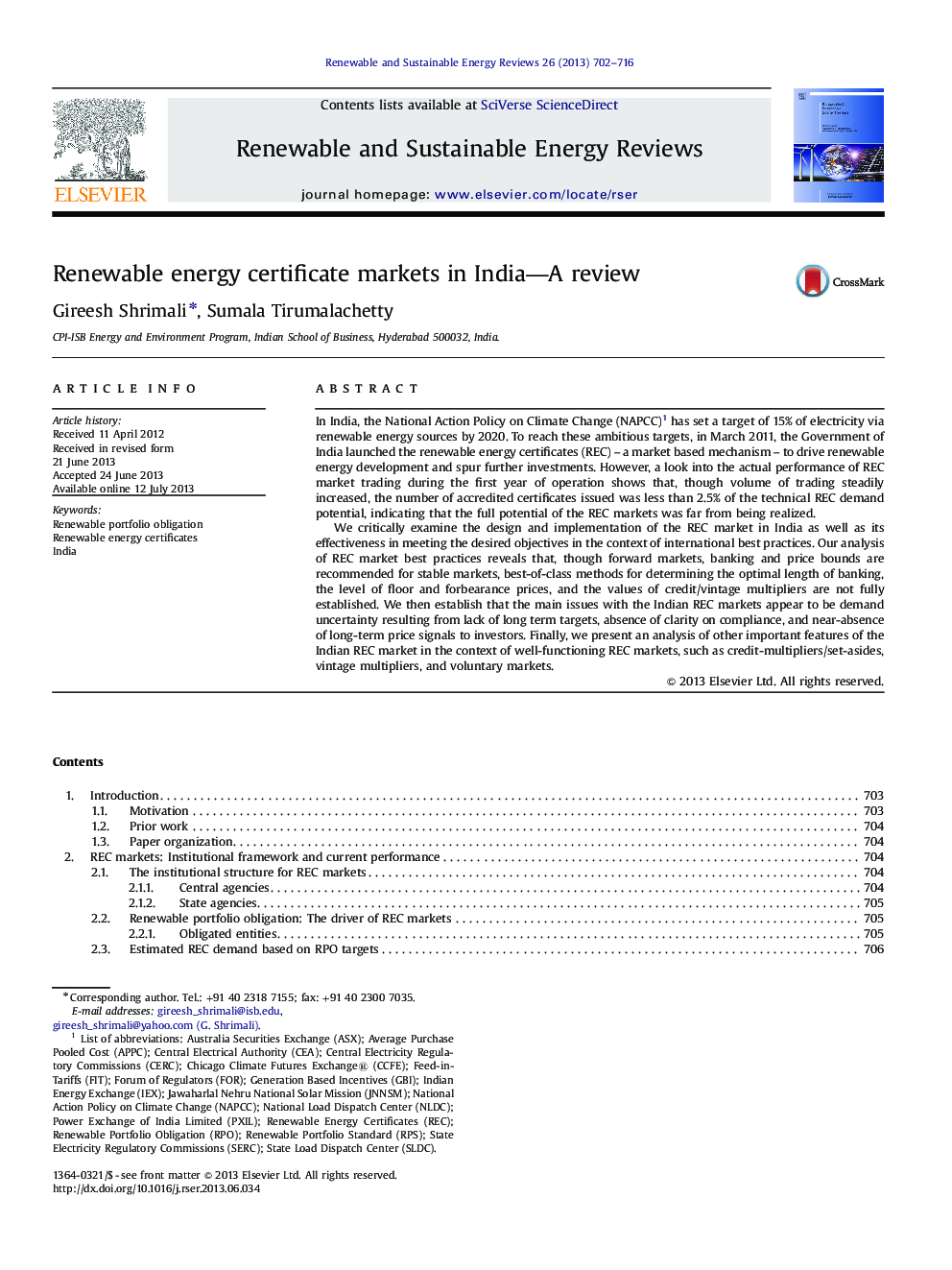| Article ID | Journal | Published Year | Pages | File Type |
|---|---|---|---|---|
| 8121802 | Renewable and Sustainable Energy Reviews | 2013 | 15 Pages |
Abstract
We critically examine the design and implementation of the REC market in India as well as its effectiveness in meeting the desired objectives in the context of international best practices. Our analysis of REC market best practices reveals that, though forward markets, banking and price bounds are recommended for stable markets, best-of-class methods for determining the optimal length of banking, the level of floor and forbearance prices, and the values of credit/vintage multipliers are not fully established. We then establish that the main issues with the Indian REC markets appear to be demand uncertainty resulting from lack of long term targets, absence of clarity on compliance, and near-absence of long-term price signals to investors. Finally, we present an analysis of other important features of the Indian REC market in the context of well-functioning REC markets, such as credit-multipliers/set-asides, vintage multipliers, and voluntary markets.
Keywords
Related Topics
Physical Sciences and Engineering
Energy
Renewable Energy, Sustainability and the Environment
Authors
Gireesh Shrimali, Sumala Tirumalachetty,
